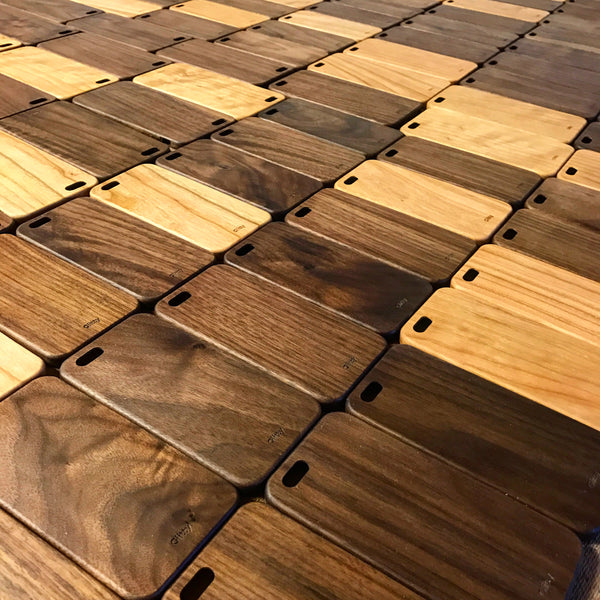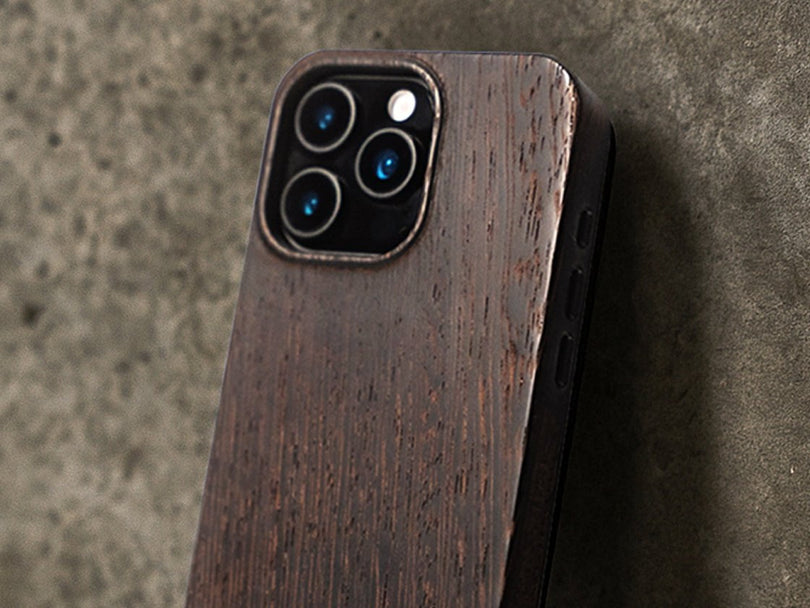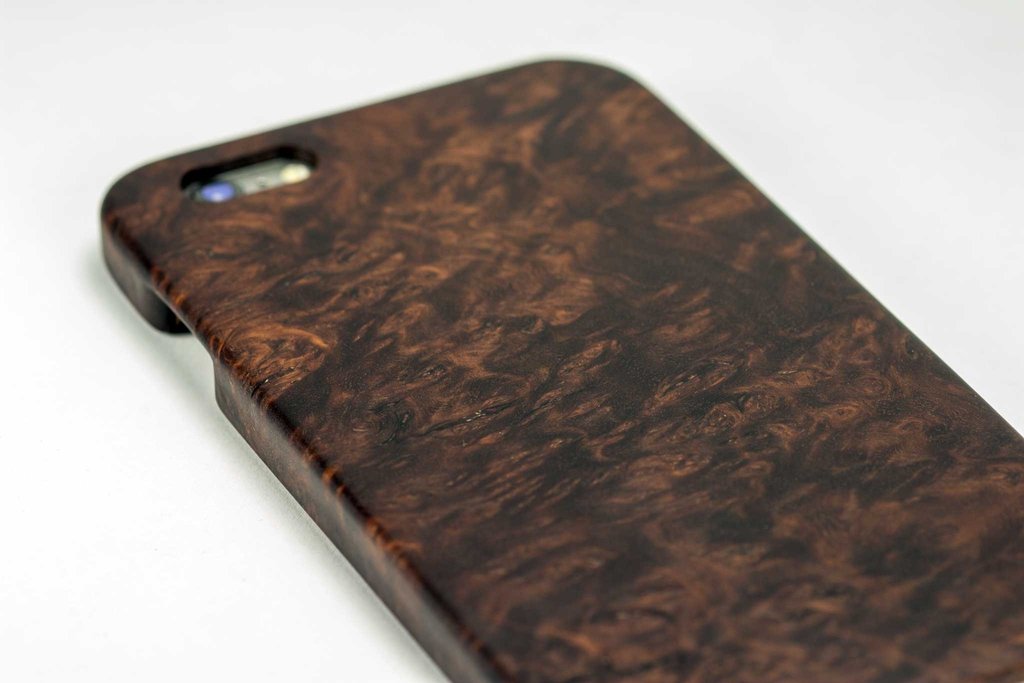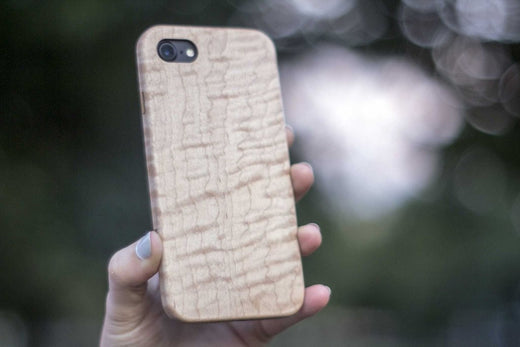In order to craft the best handmade wood iPhone and Pixel cases possible, KerfCase offers a wide variety of wood species, some of which incorporate unique features that are especially prized.
If you're not a woodworker, but you want to learn more about what makes some wood cuts (and some cases) especially beautiful, enjoy our four-part series on unique wood features!
Part 1: Spalting | Part 2: Figured Wood | Part 4: Chatoyancy
What is it about burl wood that makes it so beautiful and prized? Read on to find out.
No two pieces of wood are alike. One of the great joys of working with wood is knowing that no matter if you're carving a Greek god or nailing together a bookshelf, your creation will be 100% unique. Like snowflakes and fingerprints, the grain pattern that forms in trees never perfectly repeats, so each board will have its own unique appearance.
This uniqueness exists on a spectrum; many cuts of wood look almost alike, the differences only perceptible to a seasoned viewer, or a microscope. For craftsmen looking for uniformity across a large project, this is a good thing. But we at KerfCase are specialty woodworkers, looking for the most unique and interesting pieces of wood around to use in our truly one-of-a-kind cases. So let's take a look at the special things that we look out for in our wood selection, zooming in this week on burl wood.
Burls Just Wanna Have Fun
If you sort a wood iPhone case collection by price, you’ll notice that the most expensive KerfCase money can buy is the Amboyna Burl case. At a wallet-walloping $409 starting price, it handily beats out other interesting wood types on price, such as our spalted maple and figured walnut cases. What is it about burls that makes them so prized (and so expensive)? Let's find out.
Just like pearls (which I tried and failed to make into a pun for the above heading), burls are something beautiful, made from something annoying. When irritants are introduced into an oyster’s body, it sequesters off the offending particles in successive layers of calcium carbonate, eventually producing a lustrous, iridescent jewel.

Similarly, an irritating fungus or insect habitat can sometimes cause a response in a living tree, rapidly creating a warty mass of tissue, covered in bark, to protect the inflamed area.

These weird tree warts would be strange but unremarkable, were it not for their fascinating inner makeup. Most wood grain runs in a straight line and is rather predictable, but in a burl, the grain twists and spirals in surprising ways, creating a complex knot of grain that is uniquely strong, and when viewed in cross-section, absolutely gorgeous.

Burl Meets World
For obvious reasons, burl wood is rightly prized by furniture makers, luthiers, and all sorts of specialty woodworkers for its stunning appearance and unique structural properties. You see burl lining nice cabinets, luxury automobiles, and even the sounding boards of guitars!

Adding to burl wood’s value is its rarity. Spalted wood (and pearls, for that matter), can be “farmed” by fostering the right environment for the useful feature to grow. While scientists have a rough idea of how burls are formed, no one has succeeded in growing them in a controlled environment so far. Meaning this rare grain can only be found in the wild.
Unfortunately, the market forces of scarcity and demand have created “burl poachers:” people who mutilate protected trees to harvest the valuable wood, leaving horrible scars behind.

A Burl to Call My Own
Hopefully, this shines a light on why an iPhone case made of burl wood would be so special! Amboyna burl is our cream of the crop, owing to its deep maroon coloring and stunning grain pattern. It is harvested responsibly and sustainably from the padauk wood it grows from in southeast Asia, and its many holes and checks are stabilized with resin before we carve it into a case and sand and finish it to a beautiful sheen.
For those hoping to get in on the fun without spending quite as much on an iPhone case, our Yellow Box burl comes strongly recommended.
We have a few new burl wood cuts coming soon that we can’t wait to show you! Keep an eye on our Facebook/Instagram to get the latest updates. You can also contact us to get early access to our exclusive and rare wood cuts though our Specialty Woods mailing list.
The best part of my job is helping people choose their perfect case, so please contact me if you’d like to see our available wood, and choose a grain pattern that fits you the best. Especially with burls, it’s important to us that you see the case you’re getting before we start to carve it. Let me know if you'd like a burl Pixel case too!

Hopefully you enjoyed my burl talk, and stay tuned for our series wrapup next week with a discussion of the impressive-sounding chatoyance!
Phil Giammattei likes to wear lots of different hats. Formerly employed at Apple, Google and Oracle, he loves applying his technical knowledge to making the best possible custom wooden phone cases. In addition to writing the Kerf Blog, Phil’s duties at KerfCase include customer service, sales, production, shipping and fulfillment, and anywhere else he can be helpful. Reach out to say hi and find out what choice cuts we have in stock!







